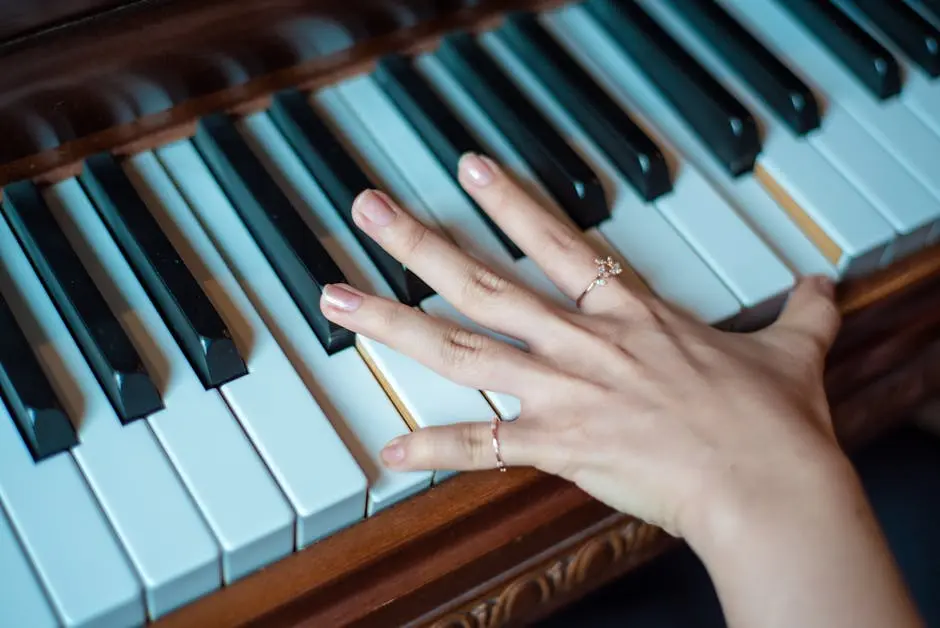Many aspiring pianists wonder if there are targeted exercises specifically designed for beginners. These exercises can make learning piano more manageable and enjoyable, building a strong foundation for future skills. In this blog, we'll explore various exercises tailored for those new to playing the piano and how they can enhance your learning experience.
Understanding the Basics of Piano Technique
To begin with, understanding the basics of piano technique is crucial for beginners. Each note on the piano has a unique role, and knowing how to play them correctly forms the bedrock of your musical journey. Mastering the proper hand position, for instance, facilitates better play and minimizes the risk of injury.
One fundamental technique involves learning how to position your fingers on the keys. The C major scale is a fantastic starting point, with its simple pattern that flows up and down the piano. By mastering this scale, you not only develop muscle memory but also gain confidence in your finger placements.
Another essential aspect of piano technique is rhythm. Understanding time signatures and practicing with a metronome can enhance your timing, ensuring that you play rhythmically. This is where simplicity meets consistency, as everyone can practice at their own pace without feeling rushed.
As you progress, incorporating simple songs into your practice can make the learning process enjoyable. Selecting music that you love can motivate you to spend more time at the piano, progressively embedding the technical concepts you've learned.
Finger Strength and Agility Exercises
Developing finger strength and agility is pivotal in your piano journey. There are specific exercises formulated to enhance this strength, such as Hanon exercises. These sequences concentrate on improving finger independence, which is necessary for playing more complex pieces later.
One effective exercise involves playing five-finger patterns in various keys. For instance, practice ascending and descending these patterns, ensuring that each finger strikes the key firmly and consistently. This builds not only strength but also coordination.
In addition to Hanon exercises, incorporating finger stretches before practice can prevent injuries and promote flexibility. Gentle stretches help warm up your fingers for more rigorous exercises, setting a solid foundation for longevity in your playing.
Engaging in regular practice of these exercises significantly enhances your playing capabilities. Over time, you'll notice improved dexterity, which opens avenues for exploring more challenging pieces.
Simple Chord Progressions for Beginners
Engaging with simple chord progressions is another fantastic way for beginners to grasp the basics of piano playing. Chords serve as the backbone of nearly every song, and understanding how they work unlocks a whole new realm of musical creativity.
Starting with basic triads, such as C major, F major, and G major, allows you to familiarize yourself with their relative placements on the piano. Practicing transitions between these chords can also improve your hand coordination and timing.
A popular chord progression is the I-IV-V progression, which appears in countless songs. Learning to play this sequence can make you feel accomplished and prepared to play along with numerous tracks, thereby rewarding your efforts instantly.
Additionally, consider experimenting with inversions of these chords. This will not only enhance your understanding of harmony but also give your playing a more professional sound as you explore different voicings.
Sight-Reading Exercises to Enhance Musical Literacy
Sight-reading is a skill that every pianist should develop. This ability allows you to read and play music at a glance, thus broadening your repertoire significantly. Specific exercises and methods can make this process smoother for beginners.
One effective approach is to start with easy sheet music. Familiarizing yourself with notes on the staff and their corresponding keys can build your confidence. Try identifying a few simple melodies and attempting to play them without prior practice.
Incorporating rhythm exercises by clapping out patterns before playing can strengthen your overall reading skills. This lays the groundwork for understanding how written music translates into performance.
Another valuable strategy is to read and play music regularly—even just a few minutes a day—ensuring that you challenge yourself without overwhelming your learning process. With consistent practice, your sight-reading abilities will flourish, enriching your overall musicianship.
Wrapping Up Your Piano Practice
In conclusion, specific exercises designed for beginners can significantly aid your piano journey. By focusing on fundamental techniques, developing finger strength, and improving sight-reading skills, you can establish a solid foundation for your musical growth. Embrace consistency in practice, and you'll see progress over time.
You can start your music journey today with a Free Trial Lesson at Matt Burk Music Studio! Click this link to schedule your Free Trial Lesson today! https://mattburkmusicstudio.opus1.io/w/trial


